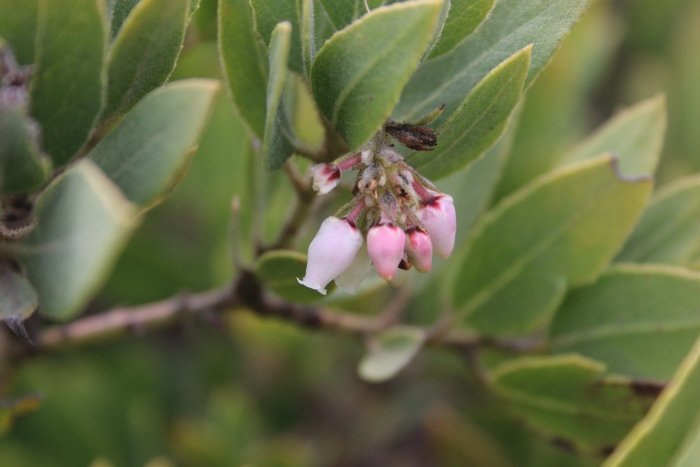Eastwood’s Manzanita
(Arctostaphylos glandulosa)
Eastwood’s Manzanita (Arctostaphylos glandulosa)
/
/

Joe Decruyenaere
CC BY-SA 2.0




















































































Estimated Native Range
Summary
Eastwood’s Manzanita is valued for its drought tolerance, making it suitable for xeriscaping and native plant gardens. It is also used for slope stabilization and as an ornamental in residential landscaping. This shrub thrives in full sun to part shade and requires very little water once established, preferring well-drained soils. While it is generally low-maintenance, it can be susceptible to fungal diseases such as root rot if overwatered or planted in poorly drained soils. Gardeners should be aware that it does not transplant well due to its sensitive root system.CC BY-SA 4.0
Plant Description
- Plant Type: Shrub
- Height: 3-6 feet
- Width: 1-2 feet
- Growth Rate: Moderate
- Flower Color: Pink, White
- Flowering Season: Spring, Winter
- Leaf Retention: Evergreen
Growth Requirements
- Sun: Full Sun, Part Shade
- Water: Very Low, Low
- Drainage: Fast
Common Uses
Bank Stabilization, Bee Garden, Bird Garden, Border Plant, Butterfly Garden, Deer Resistant, Drought Tolerant, Erosion Control, Groundcover, Hummingbird Garden, Low Maintenance, Potted Plant, Rock Garden, Salt Tolerant
Natural Habitat
Chaparral and coastal sage scrub of California and the northern part of Baja California
Other Names
Common Names:
Scientific Names: , Arctostaphylos glandulosa, Arctostaphylos glandulosa var. glandulosa, Arctostaphylos vestita, Arctostaphylos glandulosa var. virgata, Arctostaphylos glandulosa var. australis, Arctostaphylos nitens, Arctostaphylos glandulosa f. adenopuberula, Arctostaphylos glandulosa var. vestita, Uva-ursi glandulosa
GBIF Accepted Name: Arctostaphylos glandulosa Eastw.